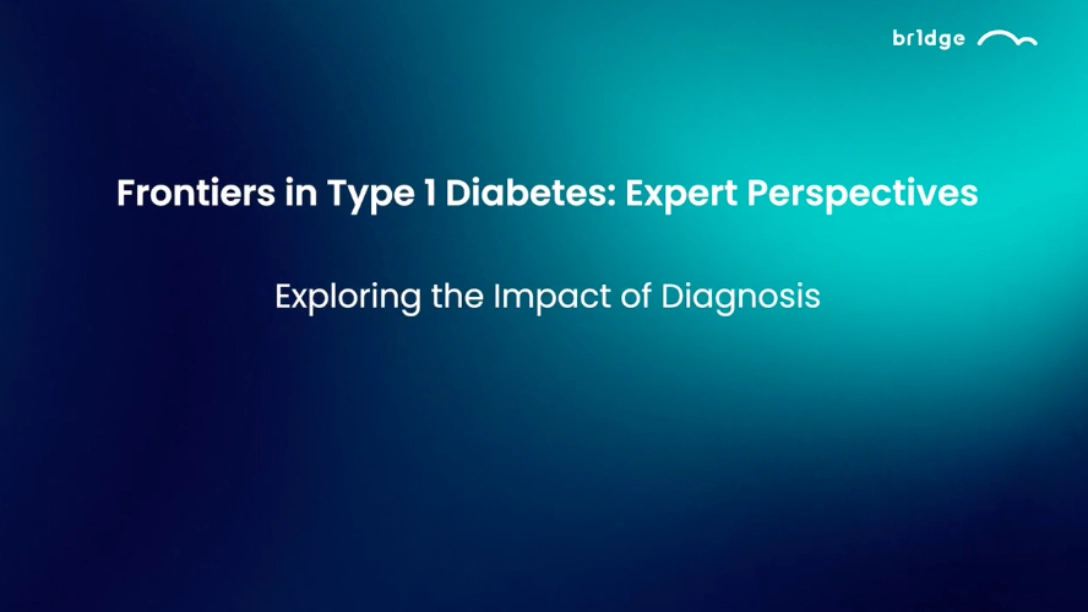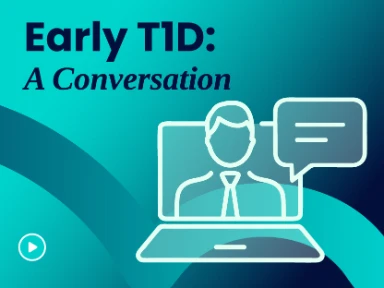- Resource
- BR1DGE
- Disease Burden
- Video
Exploring the Impact of Diagnosis
The burden associated with a diagnosis of autoimmune T1D can be wide-ranging. This video describes the impact of diagnosis on an individual and their family.

Learning Objectives
- Educate on the burdens associated with diagnosis of presymptomatic (Stage 1/2) and symptomatic (Stage 3) T1D, and how these can impact the life-long burdens of living with T1D

Summary
Diabetic ketoacidosis is a complication of Stage 3 type 1 diabetes. When glucose levels are very high and insulin secretions are very small, the body utilizes fats and proteins to produce energy and therefore also produces ketones. These ketones cause ketoacidosis. Age diagnosis of Stage 3 type 1 diabetes has an important impact on long-term health outcomes. Children, and particularly young children, have a longer expected duration of disease compared to adults. A longer duration of disease increases the risk of micro- and macrovascular complications. With regards to children and adolescents, one of the challenges we face is educating not only the patient, but their parents, siblings, grandparents, and any other person that is part of their everyday life. As the patient lives through childhood, adolescence, young adulthood and their developmental stages, they can gradually take on more responsibility for their own care. During adolescence metabolic control typically deteriorates and this has some impact on metabolic control over the course of the disease and increases the risk of microvascular complications. The impact of the type 1 diabetes diagnosis is huge, as diabetes is a disease that affects life in every single aspect. It is 24/7, you can never take a holiday from it. It's a constant burden and it is very emotionally heavy if you are a newly diagnosed person. It's a lot to take in. It's instant and there's no “getting used to it” period. Also, not for your family, not for your partner. The first weeks are like a rollercoaster. You get diagnosed, you get admitted to hospital, you have to learn to inject yourself (maybe using an insulin pump), constantly monitor your blood glucose, but also think about what you eat, how you move, whether you do any exercise/sports, and all those things are affected by diabetes. In addition to the practical burden, the mental burden comes over time because in those first few weeks you are overwhelmed but you think: we will get through this. After three/four months of talking to your physician and getting to know what the complications of diabetes will be the next shock of the diagnosis, which has a huge impact on the patients with type 1 diabetes, but also on their families and partners.
MAT-GLB-2405128-1.0 – 08/2024



